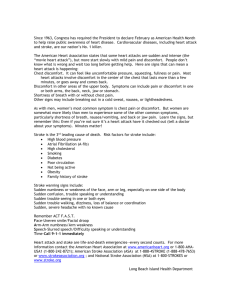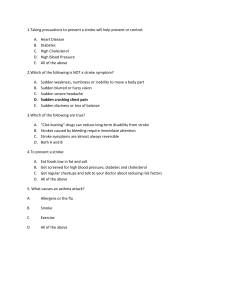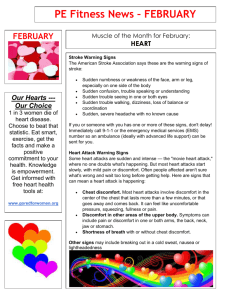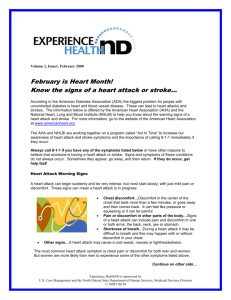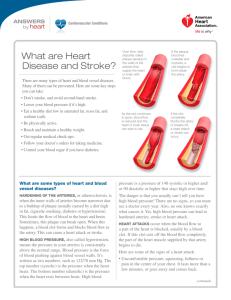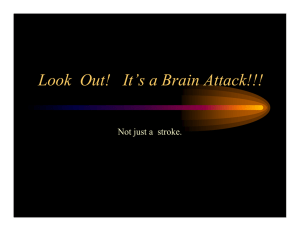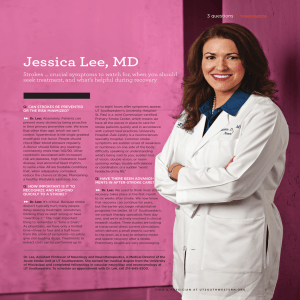Overview More women die of cardiovascular disease than from the
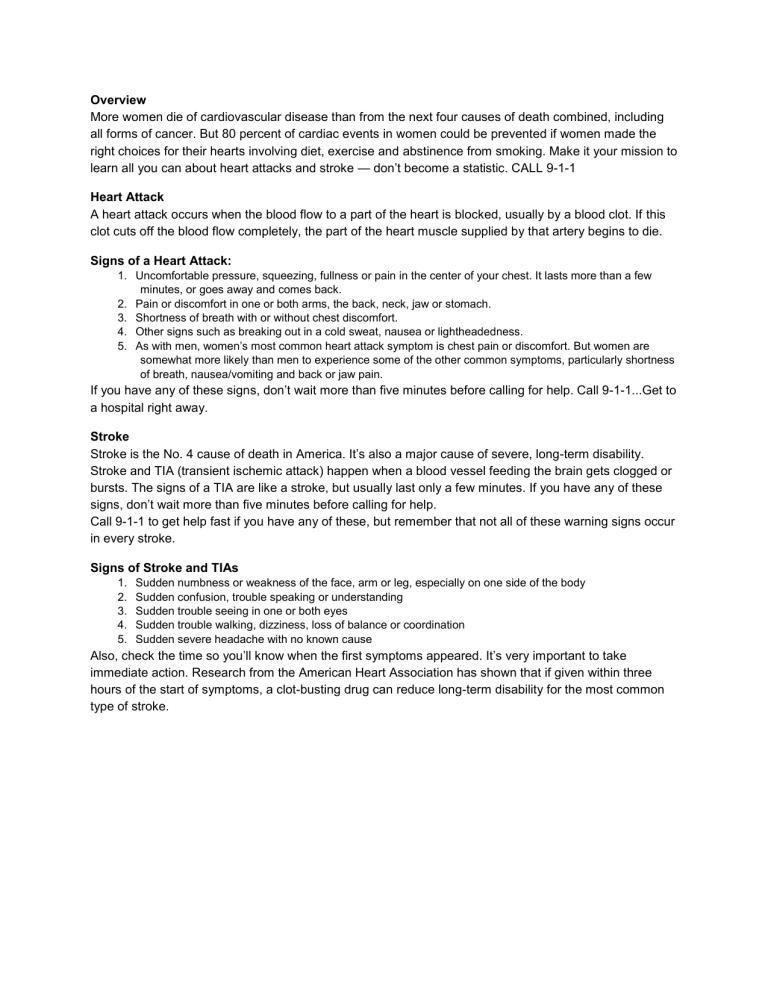
Overview
More women die of cardiovascular disease than from the next four causes of death combined, including all forms of cancer. But 80 percent of cardiac events in women could be prevented if women made the right choices for their hearts involving diet, exercise and abstinence from smoking. Make it your mission to learn all you can about heart attacks and stroke — don’t become a statistic. CALL 9-1-1
Heart Attack
A heart attack occurs when the blood flow to a part of the heart is blocked, usually by a blood clot. If this clot cuts off the blood flow completely, the part of the heart muscle supplied by that artery begins to die.
Signs of a Heart Attack:
1. Uncomfortable pressure, squeezing, fullness or pain in the center of your chest. It lasts more than a few minutes, or goes away and comes back.
2. Pain or discomfort in one or both arms, the back, neck, jaw or stomach.
3. Shortness of breath with or without chest discomfort.
4. Other signs such as breaking out in a cold sweat, nausea or lightheadedness.
5.
As with men, women’s most common heart attack symptom is chest pain or discomfort. But women are somewhat more likely than men to experience some of the other common symptoms, particularly shortness of breath, nausea/vomiting and back or jaw pain.
If you have any of these sign s, don’t wait more than five minutes before calling for help. Call 9-1-1...Get to a hospital right away.
Stroke
Stroke is the No. 4 cause of death in America. It’s also a major cause of severe, long-term disability.
Stroke and TIA (transient ischemic attack) happen when a blood vessel feeding the brain gets clogged or bursts. The signs of a TIA are like a stroke, but usually last only a few minutes. If you have any of these signs, don’t wait more than five minutes before calling for help.
Call 9-1-1 to get help fast if you have any of these, but remember that not all of these warning signs occur in every stroke.
Signs of Stroke and TIAs
1. Sudden numbness or weakness of the face, arm or leg, especially on one side of the body
2. Sudden confusion, trouble speaking or understanding
3. Sudden trouble seeing in one or both eyes
4. Sudden trouble walking, dizziness, loss of balance or coordination
5. Sudden severe headache with no known cause
Also, check the time so you’ll know when the first symptoms appeared. It’s very important to take immediate action. Research from the American Heart Association has shown that if given within three hours of the start of symptoms, a clot-busting drug can reduce long-term disability for the most common type of stroke.
